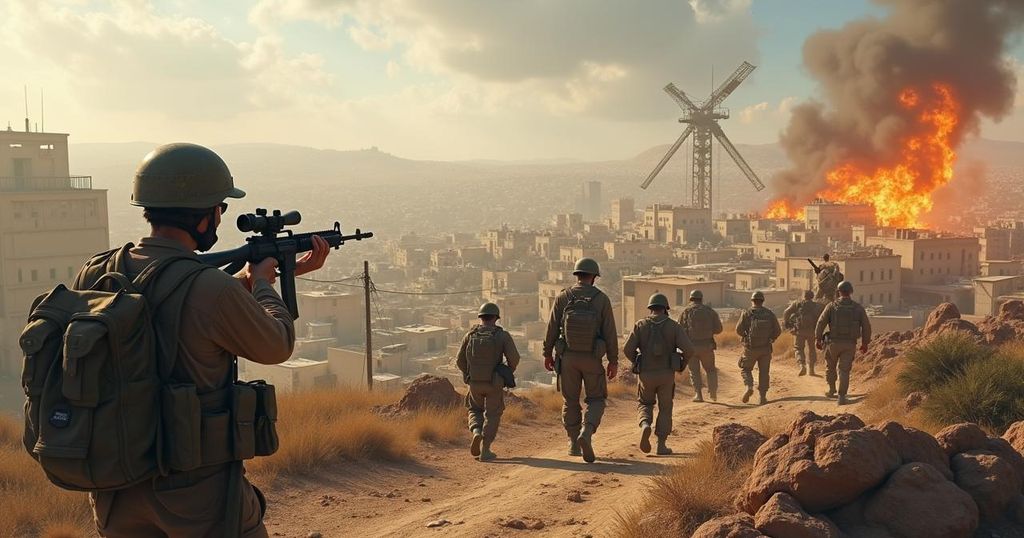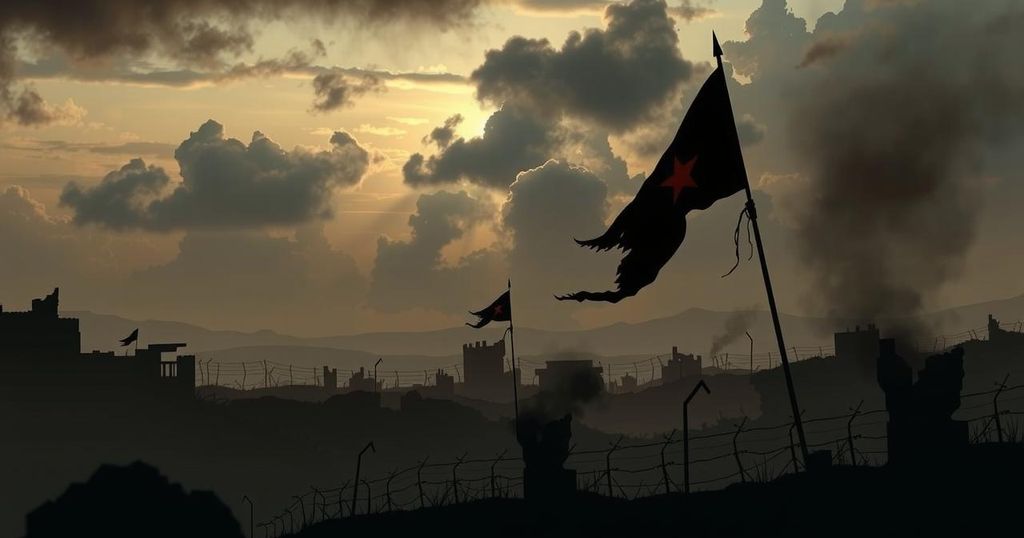An Overview of the Lebanese Civil War (1975-1990)
The Lebanese Civil War (1975-1990) was a destructive conflict driven by communal divisions, deteriorating state authority, and foreign interventions. Major factions included the Phalangists, the LNM, and the PLO, leading to a humanitarian crisis with over 100,000 deaths and many displaced. The Ṭāʾif Accord in 1989 aimed to restructure political power and ended the war, paving the way for reconstruction efforts.
The Lebanese Civil War was a complex civil conflict that spanned from 1975 to 1990, marked by the fragmentation of the Lebanese state and the emergence of various militias based on communal affiliations. The war was fueled by the involvement of foreign entities including the Palestinian Liberation Organization (PLO), Syria, and Israel, exacerbating tensions among the local factions. Major participating groups included the Phalangists, representing the Maronite Christians in the Lebanese Front (LF), the Lebanese National Movement (LNM), which encompassed secular leftists and Sunni Muslims, as well as the Amal movement focusing on Shiʿi populism. The PLO also played a crucial role due to the significant Palestinian refugee population in Lebanon. The war stemmed from deep-rooted societal insecurities and governmental failures, stemming back to the presidency of Fuad Chehab in the late 1950s and early 1960s. His attempts to centralize governance and security dissipated as his administration struggled with patronage networks and the burgeoning influence of the PLO, which had facilitated Israeli incursions into Lebanon. The civil conflict formally initiated on April 13, 1975, with a deadly attack by the Phalangists against a Palestinian bus, igniting widespread violence that divided Beirut along sectarian lines. As the civil conflict progressed, Syria intervened militarily to restore a power balance favoring the Christian groups amidst an increasing Israeli presence. This culminated in the 1982 Israeli invasion, which aimed to eliminate PLO forces from Lebanon but instead fostered the emergence of Hezbollah, a Shiʿi militia that would become a pivotal political and military player in Lebanese society. The war officially ended with the signing of the Ṭāʾif Accord in October 1989, which sought to restore political order through constitutional reforms that adapted power-sharing agreements between Christian and Muslim factions. The ratification of the accord, coupled with a military campaign against General Michel Aoun, who opposed Syrian influence, marked the end of an era marked by widespread violence and destabilization in Lebanon. The repercussions of the civil war were profound, with estimates of over 100,000 fatalities and significant displacement of the population, prompting extensive reconstruction efforts in subsequent years.
The Lebanese Civil War arose from a convergence of factors including long-standing sectarian tensions, sociopolitical instability, foreign interventions, and the weakening of state mechanisms for governance and security. The governmental reforms attempted under President Fuad Chehab ultimately backfired, leading to increased dissatisfaction and insecurity. The escalating power of the PLO within Lebanon, coupled with foreign military involvements from Israel and Syria, created a volatile environment that facilitated the rise of armed militias operating outside the state’s control. The descent into civil war highlighted the deep divisions within Lebanese society, which were exacerbated by the actions of political leaders and external forces.
In summary, the Lebanese Civil War was a multifaceted conflict that lasted from 1975 to 1990, resulting from the disintegration of state authority and the evolution of sectarian militias. The involvement of international actors significantly influenced the course of the war, leading to widespread violence and a burgeoning refugee crisis. The eventual resolution through the Ṭāʾif Accord aimed to restore governmental structure and balance of power between sectarian groups, establishing a framework for rebuilding a war-torn Lebanon. Despite this, the war’s lasting impact on Lebanese society and politics remains significant, with ramifications that continue to be felt today.
Original Source: www.britannica.com








Post Comment